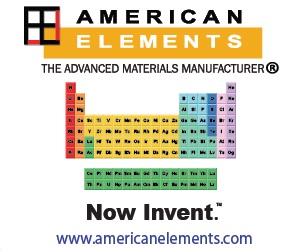
April 22 - 26, 2024
Seattle, Washington
May 7 - 9, 2024 (Virtual)
Symposium Supporters
2024 MRS Spring Meeting & Exhibit
EL07.04.09
potentially interesting material owing to the fact that it exhibits orthorhombic (o) and hexagonal (h)
structures, which significantly differ in terms of lattice symmetry and the symmetry of the surroundings
of the individual cations. This difference in structural symmetry contributes to unusual changes in
physical properties. In o-LFO canting of Fe moments towards c direction gives rise to weak
ferromagnetism below Néel Temperature (620 K), while, ferroelectricity is unexpected due to
symmetry of lattice. On the other hand, weak ferromagnetism is not allowed in h-LFO unless the
moments are along the ‘a’ axis. Present work is intended to realize the co-existence of o-LFO and h-
LFO to achieve ferroelectricity and ferromagnetism simultaneously in a single nanostructure of two
different morphologies i.e. nanoparticles and nanofibers. In multiferroic LuFeO3 the hexagonal (-h)
phase is an intermediate metastable phase encountered during the amorphous to orthorhombic (-o)
transformation and is ferroelectric in nature. So far h-phase has only been stabilized in a substrate-
supported layered ultrathin film form. Herein we show that the surface-induced strain field intrinsically
present in nano-systems can self-stabilize this phase and the hexagonal to orthorhombic phase
constitution ratio depends on the shape of the nanomaterial. Thus, nanofibers (nanoparticles) strain-
stabilize the o : h ratio of about 23 : 77 (75 : 25). The inclusion of nano-LuFeO3 into PDMS renders
impressive nanogenerator performance, consistent with the ferroelectric phase content. This trait in the
biphasic LuFeO3 is attributed to: (i) Structure: Orthorhombic and hexagonal mixed phase: wherein the
lattice dynamics change with temperature (both in case of nanoparticles and nanofibers), (ii)
Morphology: (nanoparticles and nanofibers): wherein the dynamics of interparticle interactions would
differ for nanoparticles and nanofibers.
Impressive Nanogenerator Application Using Nanoscale LuFeO3: Role of Structure and Morphology
When and Where
Apr 24, 2024
11:45am - 12:00pm
11:45am - 12:00pm
Room 342, Level 3, Summit
Presenter(s)
Co-Author(s)
Smita Chaturvedi1,2,Priyank Shyam3,Sachin Kumar Singh4,Avinash Kumbhar1,Gopalan Srinivasan5,Satishchandra Ogale2,6
Savitribai Phule Pune University1,IISER Pune2,Aarhus University3,Delhi University4,Oakland University5,TCG CREST6
Abstract
Smita Chaturvedi1,2,Priyank Shyam3,Sachin Kumar Singh4,Avinash Kumbhar1,Gopalan Srinivasan5,Satishchandra Ogale2,6
Savitribai Phule Pune University1,IISER Pune2,Aarhus University3,Delhi University4,Oakland University5,TCG CREST6
In the domain of multiferroicity, Lutetium orthoferrite (LuFeO3) represents apotentially interesting material owing to the fact that it exhibits orthorhombic (o) and hexagonal (h)
structures, which significantly differ in terms of lattice symmetry and the symmetry of the surroundings
of the individual cations. This difference in structural symmetry contributes to unusual changes in
physical properties. In o-LFO canting of Fe moments towards c direction gives rise to weak
ferromagnetism below Néel Temperature (620 K), while, ferroelectricity is unexpected due to
symmetry of lattice. On the other hand, weak ferromagnetism is not allowed in h-LFO unless the
moments are along the ‘a’ axis. Present work is intended to realize the co-existence of o-LFO and h-
LFO to achieve ferroelectricity and ferromagnetism simultaneously in a single nanostructure of two
different morphologies i.e. nanoparticles and nanofibers. In multiferroic LuFeO3 the hexagonal (-h)
phase is an intermediate metastable phase encountered during the amorphous to orthorhombic (-o)
transformation and is ferroelectric in nature. So far h-phase has only been stabilized in a substrate-
supported layered ultrathin film form. Herein we show that the surface-induced strain field intrinsically
present in nano-systems can self-stabilize this phase and the hexagonal to orthorhombic phase
constitution ratio depends on the shape of the nanomaterial. Thus, nanofibers (nanoparticles) strain-
stabilize the o : h ratio of about 23 : 77 (75 : 25). The inclusion of nano-LuFeO3 into PDMS renders
impressive nanogenerator performance, consistent with the ferroelectric phase content. This trait in the
biphasic LuFeO3 is attributed to: (i) Structure: Orthorhombic and hexagonal mixed phase: wherein the
lattice dynamics change with temperature (both in case of nanoparticles and nanofibers), (ii)
Morphology: (nanoparticles and nanofibers): wherein the dynamics of interparticle interactions would
differ for nanoparticles and nanofibers.
Keywords
Lu | oxide | x-ray diffraction (XRD)
Symposium Organizers
John Heron, University of Michigan
Morgan Trassin, ETH Zurich
Ruijuan Xu, North Carolina State University
Di Yi, Tsinghua University
Symposium Support
Gold
ADNANOTEK CORP.
Bronze
Arrayed Materials (China) Co., Ltd.
NBM Design, Inc.
ADNANOTEK CORP.
Bronze
Arrayed Materials (China) Co., Ltd.
NBM Design, Inc.
Session Chairs
Ipek Efe
Di Yi



















